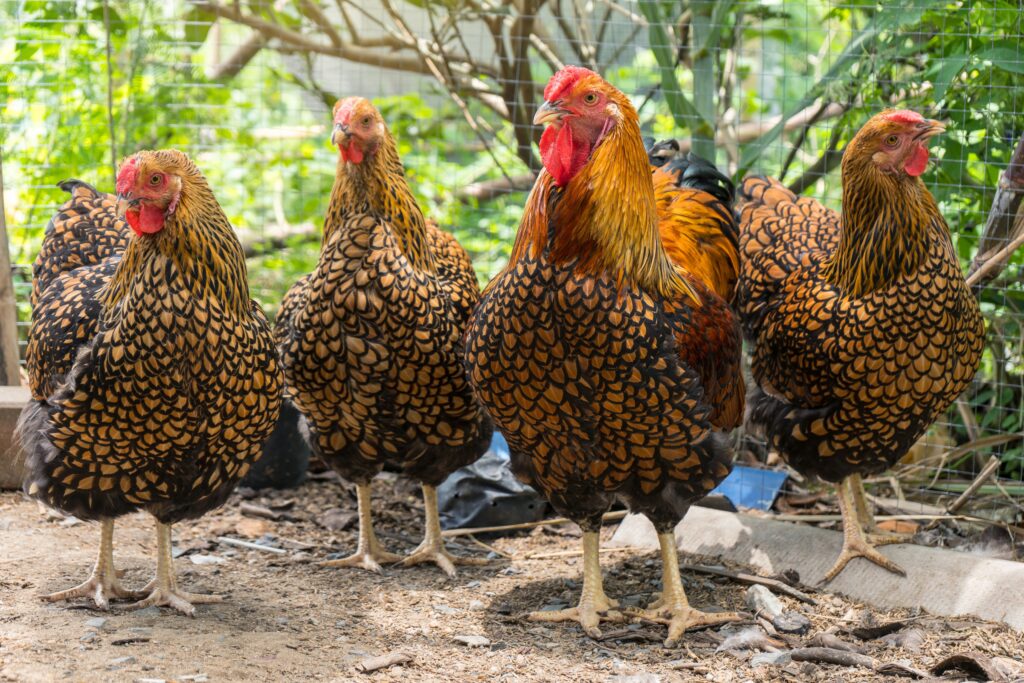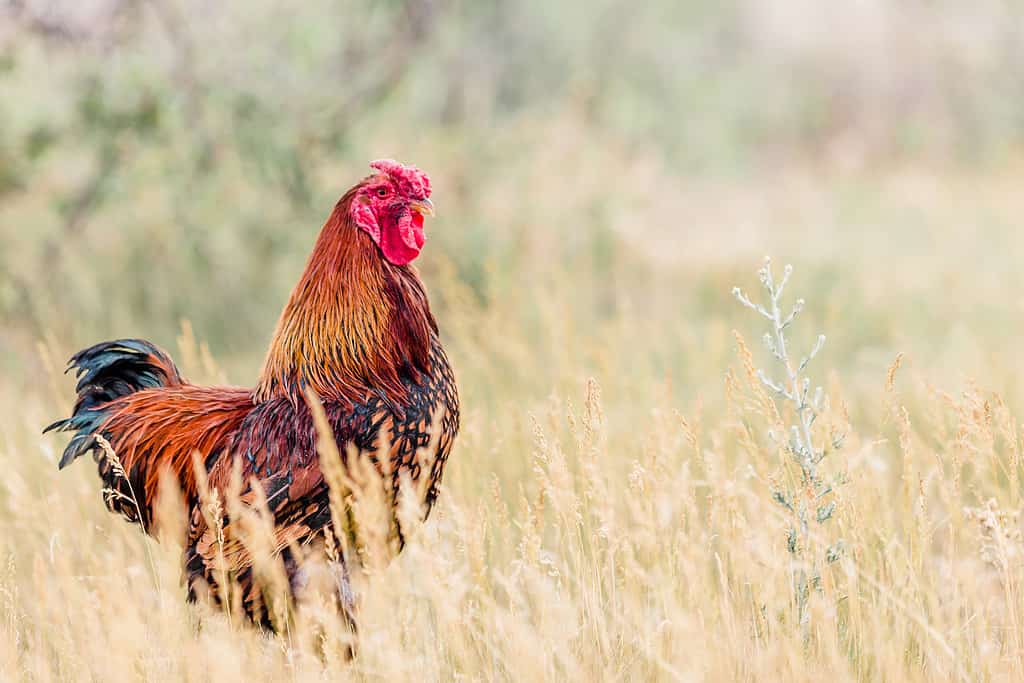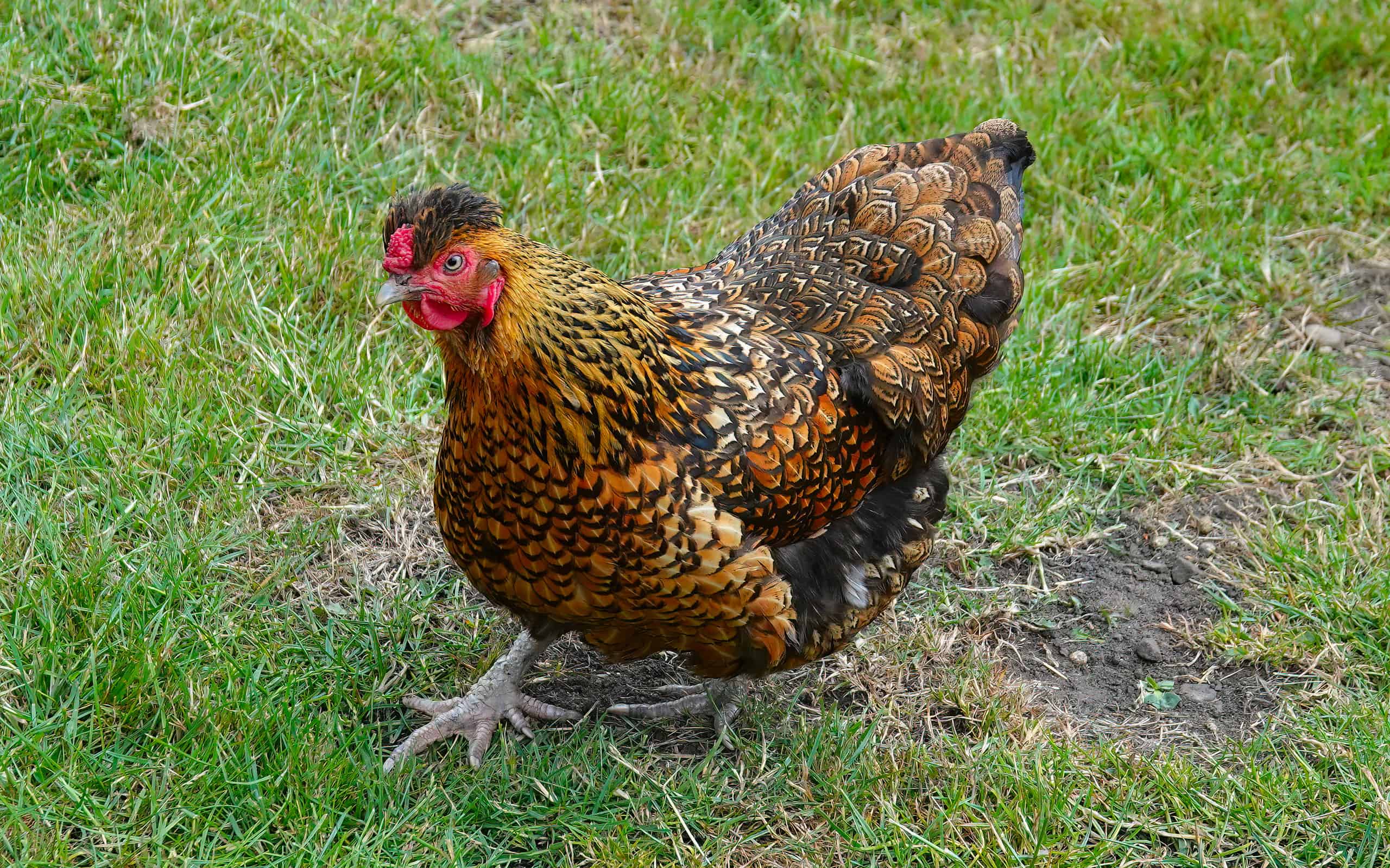Are you shopping for some new chickens (or your very first)? If so, you may have heard the name Golden Laced Wyandotte chicken. It sounds neat, but what exactly is it? And is it the right bird for you? We will answer the first question in the guide below. However, only you can determine the answer to the second after learning more about this amazing bird.
What Is the Golden Laced Wyandotte Chicken?
This striking bird was originally bred in the 1880s. The first Wyandotte came from the Brahmas and Hamburgs and was called the Silver Laced Wyandotte. It got accepted into the American Poultry Association in 1883.
The Golden Laced Wyandotte followed a few short years later. It got accepted into the American Poultry Association in 1888. This variety came from mixing the Silver Laced Wyandottes with a few other birds — the Brown Leghorn, Partridge, and Cochin.
It is a dual-purpose chicken and a heritage breed. While it is growing in popularity now, that wasn’t always the case. Unfortunately, this amazing chicken was on the endangered list for many years. But it finally got removed in 2016 thanks to increasing consumer demand.

Wyandotte chickens have distinctive gold and black feathers.
©Ton Bangkeaw/Shutterstock.com
Golden Laced Wyandotte: Appearance
One of the more noticeable aspects of the Golden Lace Wyandotte is its unique feather coloring. The primary feathers are dark brown or black. They have a golden neck and head. The wings and breast are also a mixture of yellow and black. However, these birds do not have the same color variation as the rest of the Wyandotte family.
Hens and roosters vary slightly in their coloration. The gold lacing on roosters is not as prominent as with hens.
Both hens and roosters have red eyes, a yellow beak, and red wattles, ears, and combs. Their heads are smaller than many other chicken breeds. They have a road, round, u-shaped back, and fluffy plumage.
They are larger birds. The hens typically reach about 6 to 8.5 pounds, and roosters easily top 8.5 pounds.
Golden Laced Wyandotte: Life Span
These amazing birds have a decent lifespan. They will live for at least five years. And you will get plenty of egg production during that time. Hens reach maturity around 18-20 weeks old, when they will start laying eggs.

Golden Laced Wyandotte chickens have a moderate lifespan, but the hens start laying eggs early in their journey.
©Cavan Images/ via Getty Images
Golden Laced Wyandotte: Temperament and Health
These even-tempered birds are quite docile, making them ideal for beginners. They are reserved and quiet, so you don’t need to worry about complaints from neighbors if you live in suburban areas. However, they are not sociable and prefer to keep to their kind. The hens don’t typically show broody behavior.
While they are rather docile birds, they are not necessarily small-kid friendly. They don’t like to get cuddled and handled too much. So if you have older kids who can resist trying to snuggle with the chickens, this breed will work. Overall, they are not an aggressive breed, so older kids are safe around them.
Golden Laced Wyandottes are generally very healthy. They do not have any significant health issues to worry about. That said, all chickens are susceptible to mites, lice, or worm problems. So keep an eye on your flock and promptly treat any issues that arise.
Golden Laced Wyandottes: Eggs
The Golden Laced Wyandotte hens are moderate egg producers. Since the breed was intended as a dual-purpose chicken, there wasn’t as much focus on improved egg production. But that doesn’t mean they are slackers.
These hens lay roughly four eggs weekly, providing a solid annual amount. While it isn’t as much as other breeds, it is enough to keep you in supply if you have multiple hens. The eggs are large and light brown or cream-colored.
Caring for Golden Laced Wyandottes
Since Golden Laced Wyandottes are on the larger size, they require plenty of protein as they develop. Their initial diet should consist of 20% protein. However, they love to forage and can supplement some of their protein needs with the insects they hunt down.
At 16 weeks, transition the hens to laying feed. The ratio should be roughly 16%, and it will help them develop consistently good eggs. Don’t mix oyster shells into the general feed. But offer it in a separate container. That way, the chickens who need the calcium can access it. And remember to provide easy access to clean water.
The Golden Laced Wyandottes are large birds that like to roam. So the standard 4 square feet per bird is not enough space. Try to increase it if you can — to as much as 10 feet per bird.
Keep the perches closer to the ground to provide leg injuries when the birds hop down.

Golden laced wyandotte chickens are fairly easy to care for since they have few health issues and like to hang out by themselves.
©Nigel Harris/ via Getty Images
What Are the Pros and Cons?
As with every chicken, there will be some pros and cons to owning Golden Laced Wyandottes.
Pros:
- They can handle cold weather.
- These are self-reliant birds.
- They love to forage.
Cons:
- They don’t like other chicken breeds.
- You need to offer lots of extra coop space.
- They don’t like hot weather.
Thank you for reading! Have some feedback for us? Contact the AZ Animals editorial team.








